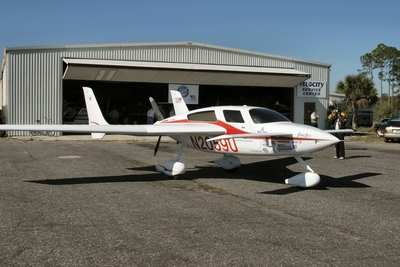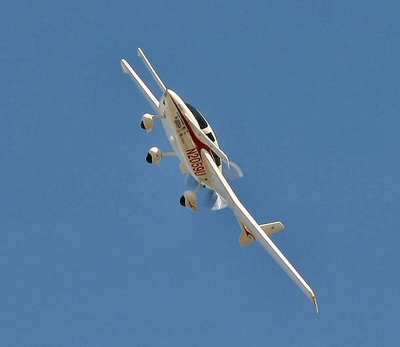Latin American Bureaucracy; Fuel Problems Slow Him
Down
It appears Gus McLeod is
a few miles closer to his polar crossing, but complications of
one form or another have slowed his progress a
bit.
On Wednesday, Gus took off from Panama City enroute to Tumbes,
Peru, when he was diverted to land in Ecuador. Gus was forced to
land by the Ecuadorians, who forced him to stand before a tribunal
and explain how his aircraft -- called the Firefly -- was
not a military machine. Apparently, when the Panamanians filed his
flight plan to Peru, they somehow listed his trip as a military
flight, hence the Ecuadorian confusion.
Gus was finally able to sort out the misunderstanding and the
Firefly departed Peru Thursday morning after difficult dealings,
mounds of paperwork and fees with the airport there. As with most
trips of this nature, he arrived at the airport at 6:00 am hoping
to get an early start, but the maze of bureaucracy held him up
until later that morning. So, with only a few hours of sleep and
all the bureaucratic headaches out of his way, Gus set course for
Santiago, Chile.
Along the way, Gus noticed he had a fuel problem, where the left
wing tank appeared to be full, while the right wing tank appeared
to be losing fuel quickly. After some troubleshooting, Gus realized
the crew in Peru failed to put the fuel cap on the tank after
re-fueling the plane. To his amazement, the fuel was literally
being sucked right out of the tank. This made for an agonizing
trip.

To slow the flow of fuel to the left tank, Gus flew at an angle,
while lowering the right wing. By the time he arrived in northern
Chile later in the day, Gus was completely exhausted and had hoped
to continue on to Santiago. however common sense took control and
he opted to rest in Chepica, Chile for the night.
However, the biggest problem encountered was on Saturday, while
Gus was enroute to Ushuaia from Santiago. He experienced a
harrowing moment at 13,000 feet when fuel from the auxiliary tanks
stopped flowing to the engine. For what he describes as an
eternity, but actually only a short time, the plane was gliding and
descending. Gus reacted quickly, switching the fuel valve back to
the main tanks and once the plane descended, the fuel started
flowing again bringing the engine came back to life.
Because he also discovered that one of his main tanks in the
wings would not flow properly Gus elected to make a cautionary
landing - at midnight -- in Rio Gallegos, a small village in
Argentina only 180 miles from Ushuaia.

In the morning, Gus made some adjustments to the plane and flew
on to Ushuaia. On Sunday, Gus landed safely there, where he's
having the airplane serviced by Mike Snyder, a mechanic from
Velocity Aircraft.
During a test flight, the auxiliary fuel tanks inside the cabin
released fuel into the cockpit and right onto Gus. He admits
it was a bumpy flight that left him rather shaken. While the
technical team workout the details, Gus will get some much-needed
rest and wait for good weather at the South Pole.

Because the South Pole weather reports indicated rough weather
until yesterday, Gus has opted to remain in Ushuaia until Mother
Nature lends a helping hand. While he rests, engineers from Korea
Aerospace and a mechanic from Velocity are preparing the airplane
for the dangerous flight around the South Pole and back to
Ushuaia.
 ANN's Daily Aero-Term (04.28.24): Airport Marking Aids
ANN's Daily Aero-Term (04.28.24): Airport Marking Aids Aero-News: Quote of the Day (04.28.24)
Aero-News: Quote of the Day (04.28.24) ANN's Daily Aero-Linx (04.28.24)
ANN's Daily Aero-Linx (04.28.24) Aero-News: Quote of the Day (04.29.24)
Aero-News: Quote of the Day (04.29.24) ANN's Daily Aero-Linx (04.29.24)
ANN's Daily Aero-Linx (04.29.24)





